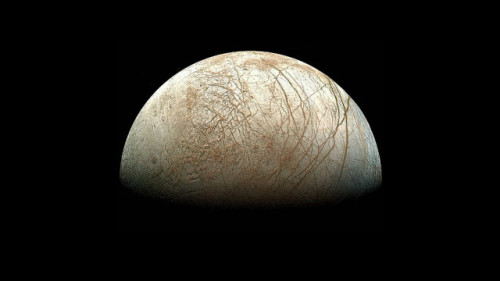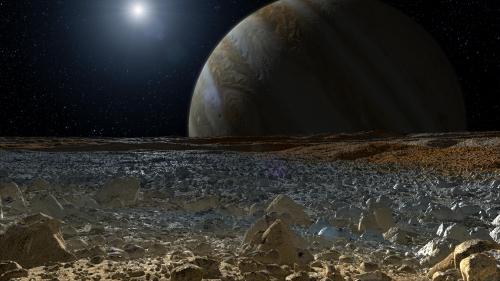NASA's $850-million Mission To Mars Is About To Launch — Here Are 12 Incredible Facts You Probably
NASA's $850-million mission to Mars is about to launch — here are 12 incredible facts you probably didn't know about the red planet

Martian volcano Olympus Mons is more than twice as high as Hawaii’s Mauna Loa, the tallest mountain on Earth from top to bottom.

Compared to the Grand Canyon on Earth, Valles Marineris on Mars is nearly five times deeper, about four times longer, and 20 times wider.

The red planet doesn’t have plate tectonics, which is what causes most quakes on Earth. But rising plumes of magma could trigger Mars quakes, as could meteorite impacts and the contraction of the world due to cooling. InSight will listen for them with its seismometer.

Martian oceans also had tsunamis like those on Earth. The tallest may have reached as high as 400 feet, just slightly shorter than the London Eye.

Like Earth, Mars has ice caps at its poles. The northern cap is up to 2 miles deep, is a mix of water and carbon dioxide, and covers an area slightly larger than Texas.

The average surface temperature on Mars is -81˚F, 138 degrees chillier than on Earth. But on a mid-summer day at the red planet’s equator, temperatures can peak at a balmy 95˚F.

Billions of years ago, Mars had oceans and flowing water. But adding them up would give you just 1.5% of all water on Earth today.

Mars has almost as much surface as Earth has land — but that doesn’t account for the 71% of Earth that’s covered in water.

The Martian atmosphere is 61 times thinner than Earth’s, and it consists almost entirely of carbon dioxide, which makes up just 0.04% of Earth’s atmosphere.

On Earth, sunsets are a brilliant mix of reds, pinks, oranges, yellows, and other colors. But on Mars they’re blue. Because air is dozens of times less dense on the surface of Mars than it is on our planet, white sunlight refracts less — leading to fewer colors (primarily blues).

Missions to Mars have become much rarer — after 23 launches in the 1960s and 1970s, we’ve launched just 10 in the new millennium (so far).

Getting to Mars is hard: About a third of the missions launched have failed.
More Posts from Tres-4b-blog and Others
*me on ellen*
ellen: so i hear u like spyro the dragon
me: yeah i guess u could say i’m a bit of a fan
*everyone in the audience turns to crystal*
me: omg ellen u didn’t


NASA plans a robotic mission to search for life on Europa | io9
It looks like it’s finally going to happen, an actual mission to Jupiter’s icy moon Europa — one of the the solar system’s best candidates for hosting alien life.
Yesterday, NASA announced an injection of $17.5 billion from the federal government (down by $1.2 billion from its 2010 peak). Of this, $15 million will be allocated for “pre-formulation” work on a mission to Europa, with plans to make detailed observations from orbit and possibly sample its interior oceans with a robotic probe. Mission details are sparse, but if all goes well, it could be launched by 2025 and arriving in the early 2030s.
This is incredibly exciting. Recent evidence points to a reasonable chance of habitability. Its massive subsurface ocean contains almost twice as much water as found on Earth. The water is kept in liquid state owing to the gravitational forces exerted by Jupiter and the moon’s turbulent global ocean currents. The good news is that a probe may not have to dig very deep to conduct its search for life; the moon’s massive plumes are ejecting water directly onto the surface.
[Read more]
-
 annabellesacres reblogged this · 3 years ago
annabellesacres reblogged this · 3 years ago -
 disney-eyes liked this · 4 years ago
disney-eyes liked this · 4 years ago -
 aspowerasthesun liked this · 4 years ago
aspowerasthesun liked this · 4 years ago -
 erossusscrofa liked this · 4 years ago
erossusscrofa liked this · 4 years ago -
 ratatouilleambiance liked this · 4 years ago
ratatouilleambiance liked this · 4 years ago -
 worry-about-it liked this · 4 years ago
worry-about-it liked this · 4 years ago -
 potatoounicorn-blog liked this · 4 years ago
potatoounicorn-blog liked this · 4 years ago -
 chaotic-pastel-science-babe liked this · 4 years ago
chaotic-pastel-science-babe liked this · 4 years ago -
 jawalton liked this · 4 years ago
jawalton liked this · 4 years ago -
 younghologramdream liked this · 4 years ago
younghologramdream liked this · 4 years ago -
 saltatmidnight reblogged this · 4 years ago
saltatmidnight reblogged this · 4 years ago -
 thepartwhereyourun reblogged this · 4 years ago
thepartwhereyourun reblogged this · 4 years ago -
 pushingbandcandy reblogged this · 4 years ago
pushingbandcandy reblogged this · 4 years ago -
 cyberbug9000 reblogged this · 4 years ago
cyberbug9000 reblogged this · 4 years ago -
 cyberbug9000 liked this · 4 years ago
cyberbug9000 liked this · 4 years ago -
 cyberbug9000 reblogged this · 4 years ago
cyberbug9000 reblogged this · 4 years ago -
 thisisinxanity reblogged this · 5 years ago
thisisinxanity reblogged this · 5 years ago -
 thisisinxanity liked this · 5 years ago
thisisinxanity liked this · 5 years ago -
 tozuii liked this · 5 years ago
tozuii liked this · 5 years ago -
 mu-si-ca-l liked this · 5 years ago
mu-si-ca-l liked this · 5 years ago -
 tronmike82 liked this · 5 years ago
tronmike82 liked this · 5 years ago -
 timelord-7 liked this · 5 years ago
timelord-7 liked this · 5 years ago -
 gangstapee liked this · 5 years ago
gangstapee liked this · 5 years ago -
 novalunosispride reblogged this · 5 years ago
novalunosispride reblogged this · 5 years ago -
 snoflaalfons liked this · 5 years ago
snoflaalfons liked this · 5 years ago -
 musings-for-the-masses liked this · 5 years ago
musings-for-the-masses liked this · 5 years ago -
 psychecollective liked this · 5 years ago
psychecollective liked this · 5 years ago -
 dogsiskela liked this · 5 years ago
dogsiskela liked this · 5 years ago -
 reprehensibleghost liked this · 5 years ago
reprehensibleghost liked this · 5 years ago -
 lonergirll liked this · 5 years ago
lonergirll liked this · 5 years ago -
 ithinkitisgreat reblogged this · 5 years ago
ithinkitisgreat reblogged this · 5 years ago -
 ithinkitisgreat liked this · 5 years ago
ithinkitisgreat liked this · 5 years ago -
 glitteryrebelgothparty-blog liked this · 5 years ago
glitteryrebelgothparty-blog liked this · 5 years ago -
 theblogwheremytrashgoes reblogged this · 5 years ago
theblogwheremytrashgoes reblogged this · 5 years ago -
 urlthatdoesntreferenceanything liked this · 5 years ago
urlthatdoesntreferenceanything liked this · 5 years ago -
 twinktwonk liked this · 6 years ago
twinktwonk liked this · 6 years ago -
 lost-caticorn liked this · 6 years ago
lost-caticorn liked this · 6 years ago -
 tres-4b-blog reblogged this · 6 years ago
tres-4b-blog reblogged this · 6 years ago -
 morby reblogged this · 6 years ago
morby reblogged this · 6 years ago














